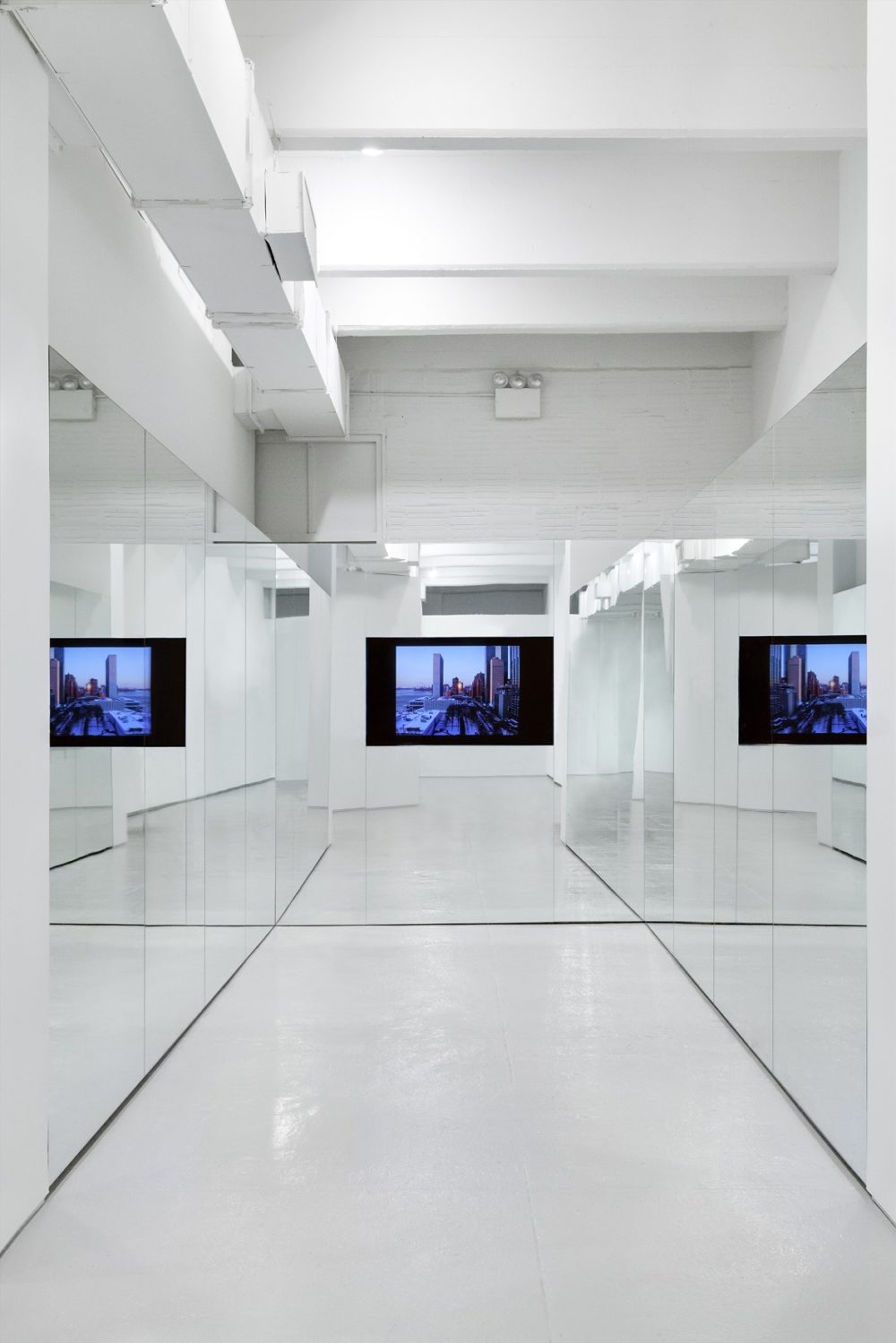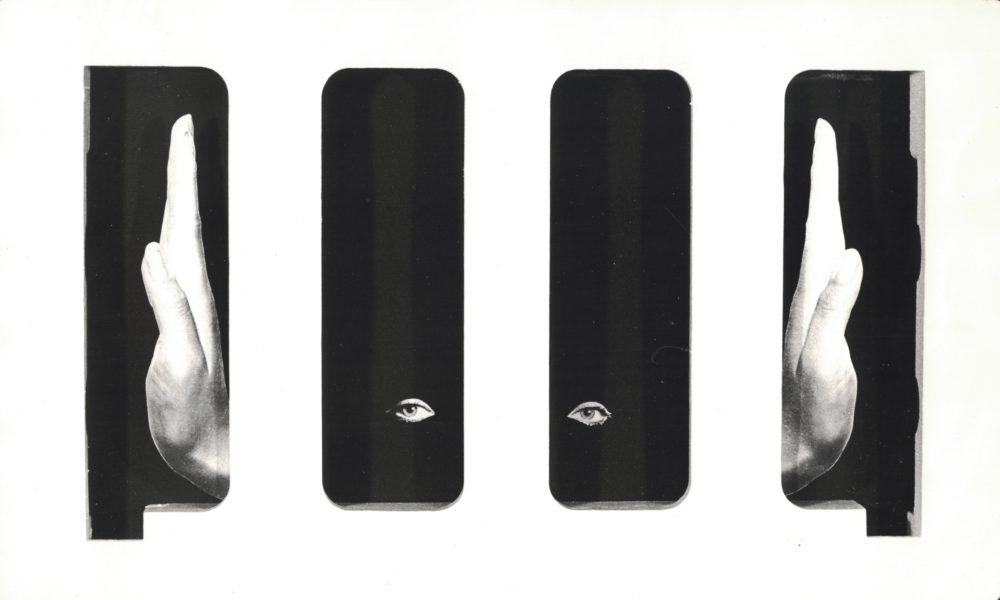The Fondazione Donnaregina per le arti contemporanee presents the first retrospective devoted to the films of Liam Gillick (Aylesbury, UK, 1964), one of the most influential contemporary artist working on an international level. Curated by Alberto Salvadori and Andrea Viliani, Standing on Top of a Building: Films 2008-2019 examines Gillick’s filmic production for the first time, in a site-specific staging conceived by the artist specifically for the exhibition at the Madre museum.

Exhibition
Liam Gillick
Standing on Top of a Building: Films 2008-2019
22.06 — 14.10.2019
Curated by Alberto Salvadori, Andrea Viliani
Opening 21.06.2019
7.00-10.00 pm
Irony Party
8.30-24.00 pm
Beginning in the early Nineties, Gillick created works that included installation, sculpture, textual intervention, video, sound and digital animation, all establishing the link to an intense critical and theoretical production. At the heart of Gillick’s artistic practice resides a complex set of issues, strictly related to each other: the relationship with the space, not just the physical space, but the political, social and economic environment; the centrality of the spectator, as an active agent who produces meaning; the world of communication and the relationship of mutual dependence intercurring between the late-capitalist/neo-liberalist economy, the arts and the institutions. Since the beginning Gillick has focused on the interaction with the spectators: he has created situations – both formal and performative – where are critically questioned some parameters linked to the fruition of art, the operation of the institutions assigned to it – such as museums – and the creation and communication of the idea of “value”. Since 1995 Gillick has produced sculptures and installations that have become among the most iconic of his works, a selection of which closes the exhibition path at the Madre museum. Based on simple modular structures of metal and Plexiglas, these works reveal how the critical potential of Minimalist art has been neutralized and appropriated by the entertainment system and contemporary corporate identity.
The most important videos and films by Gillick, produced since 2008, are shown together for the first time at the Madre exhibition. The staging has been specifically conceived to integrate the presentation of the works – on screen or projected – into the museum structure. For the first time the audience will be able to analyze the most intimate element of Gillick’s artistic research, consisting in films mostly conceived in the domestic environment of his apartment in New York, where his ideas form and flow. Compared to his sculptures and installations, these works are a further elaboration and extension of Gillick’s research into the role of interpretation as an ongoing task, that is never really finished. In the artist’s work, the interpretation becomes an instrument of narration, while the language is the most incisive in contemporary hermeneutics.
Gillick films are the paradigm of intuition, meant as the critical representation of a subject that is contextualized and analyzed, though being absent. The real subjects of these works are often dislocated off-stage, occupying the same position as the spectator. In this way Gillick recalls one of the fundamental works of the history of modern art, Las Meninas (1656) by Diego Velázquez. In that painting the Spanish artist shows himself in the act of observing the audience. He represents himself in the act of representing his off-stage models, King and Queen of Spain, that can be only seen indirectly, through a soft reflection on a mirror, in the bottom of the room. In the same way Gillick is always present in his films as a subject-object.
Even if we do not see him, the artist is sitting at his desk in his apartment in New York, while he is observing the world around him. In the exhibition at the Madre museum, each room is marked by different interventions responding to each other (posters, wall paintings, and soundtracks that switch between the rooms automatically), drawing not just the path for a visit, but a path of knowledge.
Liam Gillick
Among Liam Gillick’s main solo exhibitions: The Light Is No Brighter, CAC-Contemporary Art Centre, Vilnius (2017); Campaign, Serralves Museum, Porto (2016-2017); All-Imitate Act, Stedelijk Museum, Amsterdam (2015); From 199C to 199D, Magasin-Centre National d’Art Contemporain, Grenoble (2014); From 199A to 199B: Liam Gillick, Hessel Museum of Art, Bard College, New York (2012); A Game of War Structure, IMMA-Irish Museum of Modern Art, Dublin (2011); One long walk… Two short piers…, Bundeskunsthalle, Bonn (2010); Three Perspectives and a Short Scenario, Witte de With Center for Contemporary Art, Rotterdam, Kunsthalle, Zürich (2008), Museum of Contemporary Art, Chicago (2009); A Short Text on the Possibility of Creating an Economy of Equivalence, Palais de Tokyo, Paris (2005); 2003 Projects 79: Literally, MoMA-Museum of Modern Art, New York (2003); Annlee You Proposes, Tate Britain, London (2001).
Among the principal collective exhibitions: Adventures of the Black Square: Abstract Art and Society 1915–2015, Whitechapel Gallery, London (2015); Une Histoire: Art, Architecture, Design des années 1980 à nos jours, Centre Pompidou, Paris (2014); 9 artists, Walker Art Center, Minneapolis (2013). In 2015 he took part in the Istanbul Biennial and in the Moscow Biennale; in 2009 he represented Germany at the Biennale di Venezia.
The artist has been awarded the Paul Cassirer Kunstpreis (Berlin, 1998). He was nominated for the Turner Prize (Tate Modern, London, 2002) and for the Vincent Award (Stedelijk Museum, Amsterdam, 2008).

